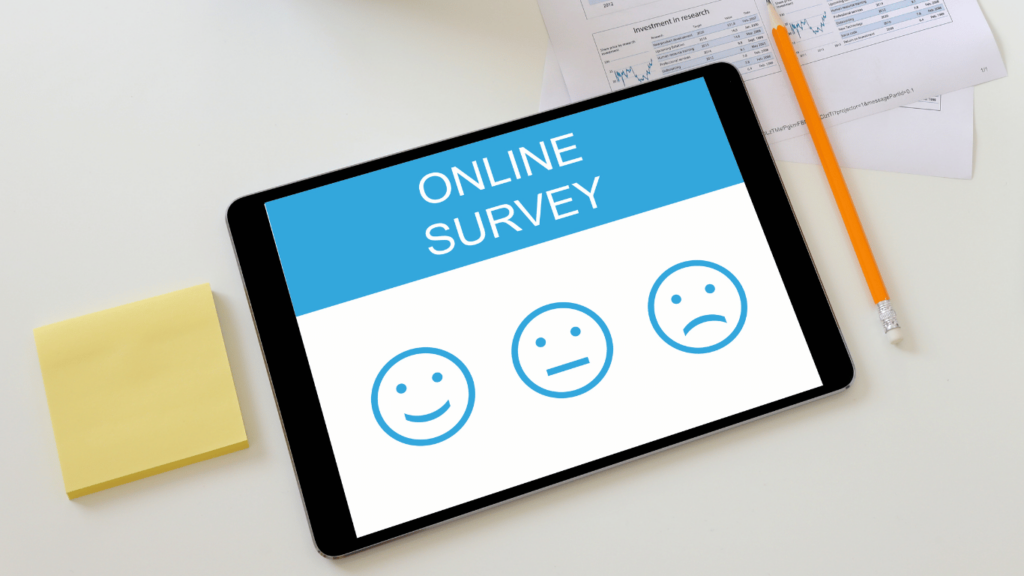For years, outsourcing customer service has been the go-to solution for scaling customer support. It made sense—offload customer inquiries to an external team, reduce costs, and keep operations running 24/7. But here’s the issue: the model was chosen more for speed, not for the customer experience.
Evaluating both the advantages and disadvantages of outsourcing customer service is crucial for making informed decisions.
Today, customers (88%) have higher expectations for customer service. They are seeking personalized, seamless, and proactive support. And the truth it, not all outsourced customer support can meet these evolving demands.
What does this mean? The future of outsourced customer support isn’t just about reactive answering of tickets and answering phone calls. It’s about a bigger picture—reducing operating expenses through outsourcing, enhancing overall efficiency, being present at the right time and stage of the customer journey, and providing a better customer experience. The future of outsourced customer support is one wherein it is an additional revenue stream, not a simple expense.
In this post, we’ll break down how companies can leverage advanced service solutions to turn outsourcing into a strategic advantage in 2025 and beyond.
Transformative trends shaping outsourced customer support in 2025

Selecting outsourcing solutions tailored to unique business needs is crucial for aligning with a business’s objectives and expectations. If you’re still stuck in thinking that customer service outsourcing is a volume game, you better look at these transformative trends shaping outsourced customer support and maintaining high standards in service quality.
Rise of AI-powered virtual agents & conversational intelligence
This is not just about chatbots that just give you a link to the FAQ page. We’re talking about artificial intelligence that gets your customer, understands their frustration, and solves the problem fast. Think of it like a super-powered customer service rep.
AI-powered virtual agents engage customers in meaningful, context-aware conversations, thanks to conversational intelligence. A projection suggests that the conversational AI market will reach $41.39 billion due to increased demand.
Increased focus on omnichannel & integrated digital experiences
Over 80% of companies now recognize the importance of implementing omnichannel strategies for integrated digital experiences. Since your customers are everywhere, your support must be too. Here’s a possible scenario—a customer might reach out via your website’s chat widget, continue through email, check your knowledge base, and then hop on a call—all for the same issue. Because they need to solve it right away. Managing customer interactions across different channels is crucial to ensure that there are seamless transitions—something that traditional call center outsourcing falls short at.
Advanced customer service outsourcing solutions now consolidate customer data from every touchpoint into a single platform. This unified perspective empowers support agents to access a complete customer history—preferences, past interactions, and prior issues—enabling them to deliver a highly personalized customer experience. Effective communication channels are essential in delivering consistent and high-quality customer service.
Demand for personalized, predictive support using customer analytics
One sure way to boost customer loyalty and retention is to have proactive customer service. Another trend is feeding customer support systems with rich customer data (like purchase history, product usage, previous issues, and even social sentiment) to deliver hyper-personalized support experiences. Effective management of customer relationships through personalized support is vital for ensuring customer satisfaction and loyalty.
AI-powered analytics data mining techniques uncover correlations within the customer data that aren’t apparent or even looked at with traditional analysis and methods. That way, agents have real-time insights into the customer’s history, allowing them to offer more relevant and efficient assistance.
Did you know the customer analytics market, which includes predictive analytics is already towards $28.82 billion by 2029? This is further proof that the future of call center outsourcing is a future where it’s all about being proactive and steps ahead.
Adoption of remote and hybrid customer service models
Top outsourcing providers are distributed teams of specialized support experts who work remotely. When businesses decide to outsource to these experts, they can easily tap into global knowledge and skills that weren’t available in traditional outsourced customer support solutions.
Leveraging remote support experts can also help internal teams by providing scalability and expertise that may be lacking when they depend on an in house team. Additionally, adopting remote support models can lead to significant cost savings related to office space and associated technology.
Advanced technologies driving next-generation outsourcing

Here’s a deeper look at how modern technology is driving the next wave of outsourced support:
Conversational AI & real-time analytics
We’re not talking about the old-school, script-following bots here. Today’s AI-powered virtual CS reps use natural language processing, machine learning, and deep learning to actually hold real conversations, respond in a human-like way, and adapt on the fly.
And with real-time analytics that let you process and analyze those customer interaction data as it happens, you get immediate visibility into customer satisfaction, agent performance, emerging issues, and overall support trends.
Sentiment analysis & emotional intelligence tech
Both of these advanced technologies allow support agents to respond with empathy and precision, which results in quality service.
Sentiment analysis takes customer interactions and uses NLP and machine learning to gauge the emotional tone. Are they frustrated? Satisfied? Neutral? It picks that up automatically. Then emotional intelligence (EI) tech goes even further. It digs into the why behind the emotions. It analyzes tone of voice, pauses, pacing—those subtle cues that tell you how a customer’s really feeling, not just what they’re saying. Together, they analyze the emotional content of customer communications.
Automation and machine learning
Automation handles the repetitive stuff (ticket routing, follow-up emails, data entry) without needing a human in the loop. It frees up agents to focus on higher-value conversations. But when you layer in machine learning, things get even smarter. ML learns from patterns in customer behavior and interaction data, so over time, it can do things like predict churn, personalize responses, and route tickets more intelligently.
The result? Faster resolutions, fewer manual handoffs, and support processes that actually scale without sacrificing quality. With properly trained agents, who receive comprehensive training in company values and relevant job skills, customer satisfaction and service quality are greatly enhanced.
This combination of automation, machine learning, and trained professionals is one of the biggest factors in reducing response times and tightening up the entire support operation.
Cloud-based infrastructure
Today’s cloud-based platforms let you scale up or down instantly, making them highly cost-effective. This means you’re not paying for idle time during slow periods while still maintaining rapid response times during peaks. Instead of a fixed team of full-time agents, modern outsourcing providers maintain networks of qualified agents who can be activated as needed—outsourced support agents come online when demand increases.
Strategic advantages & ROI of advanced support outsourcing
So, how do advanced support outsourcing benefits directly impact key business metrics and contribute to long-term success? There are significant benefits to advanced support outsourcing, including cost efficiency, scalability, and enhanced consumer satisfaction.
Cost-efficiency
The number one reason for customer service outsourcing is its cost efficiency. Managing an in-house customer support team involves significant costs, including expenses related to hiring, training, and technology. However, outsourcing can help cut costs significantly, often decreasing expenses by 30-50%—allowing companies to focus on growth and improve efficiency while simultaneously improving customer satisfaction.
Boosted with advanced solutions, it further increases to affect customer satisfaction. How? By automating the right things and giving humans more time to focus on complex issues where they can make the biggest impact. AI-powered support ensures continuous availability without incurring overtime costs associated with human agents.
Improved customer retention & Lifetime Value (LTV)
A key measure of an outsourcing provider’s success is retaining customers and increasing their LTV—fundamental goals for virtually every business.
The connection is clear: When support becomes a positive, proactive experience rather than a frustrating necessity, customers stick around longer and spend more.
Enhanced scalability & agility
The businesses that thrived through recent market volatility had one thing in common: flexibility in their customer support operations. Need more agents? More computing power? More storage? It’s all on-demand—no heavy infrastructure, no long lead times, no massive upfront costs. And when you pair that with a flexible support team that can scale according to business needs, along with remote and hybrid workforce models, scaling your support operation becomes faster, leaner, and way more agile.
Data-driven insights
Advanced support partners mine every interaction for insights that drive business improvements. By maintaining a comprehensive conversation history, they can identify product issues before they become widespread, spot upsell opportunities based on support conversations, recognize trends in customer needs that inform product development, and predict which customers are at risk of churning based on support interactions. All of them quantify the increased ROI.
Real-world insights: Companies successfully leveraging advanced outsourcing

What does this look like in practice? Selecting the right provider is crucial for businesses looking to outsource their customer service operations. The right provider ensures quality service, effective performance evaluations, and alignment of goals between the business and the provider to enhance overall customer satisfaction.
Case study: OptinMonster’s decision to outsource
OptinMonster, a leader in conversion optimization software, knew they had the traffic—but turning visitors into paying customers proved to be a challenge. Live chat seemed like the answer, but building an in house team felt expensive and resource-heavy. So OptinMonster partnered with LTVplus to outsource live chat support.
The results spoke for themselves: visitors who used live chat converted at 11x the rate of the average site visitor.
On top of that, outsourcing kept costs down and exceeded customer expectations—so much so that OptinMonster expanded the team. This win-win scenario reduced expenses while enhancing customer satisfaction, demonstrating the mutual benefits of outsourcing.
Other success stories: AI-driven personalization & omnichannel strategies
Spotify uses data like listening history and search behavior to deliver highly personalized playlists—powered by AI, of course. But this isn’t just a nice user perk. It’s a strategic play. Personalized recommendations keep users engaged longer, boost satisfaction, and ultimately drive revenue by increasing time spent on the platform.
Multilingual support is also crucial in enhancing customer satisfaction and improving brand trust. Providing support in multiple languages not only allows for better communication but also fosters cultural connections, ultimately leading to increased customer loyalty and repeat business.
A global home appliance brand is using AI and experience orchestration to deliver personalized support across every point of contact (40 multichannel touchpoints). By analyzing customer behavior in real-time, they identify friction points in the journey and proactively tailor experiences that reduce drop-offs and drive stronger conversion.
Lessons from early adopters: Avoiding pitfalls & optimizing outcomes
Not every implementation goes smoothly. Here are the key lessons from companies that faced challenges:
- Don’t try to automate everything at once
- Invest in proper training
- Ensure seamless handoffs between automated and human support
- Build robust feedback loops so systems can continuously improve
- Don’t force customers into specific channels—let them choose how they want to interact
- Train outsourced teams on company values to ensure exceptional service
Preparing for the future: Actionable steps for companies today

A successful transition requires careful planning and execution. Aligning outsourcing services with your business goals is crucial. Look for partners that offer flexible pricing options to cater to companies of different sizes, allowing you to manage costs effectively while maintaining operational strength in a dynamic market. So when evaluating potential partners for advanced support solutions, look for:
- Specialized expertise in your industry
- Integration capabilities with your existing tech stack
- Flexibility in scaling
- Transparent pricing models that align with your business outcomes
- Analytics and reporting capabilities
- Clear processes for continuous improvement
How does outsourcing improve customer satisfaction and operational efficiency? By enhancing service quality through trained agents and tailored solutions, outsourcing ultimately benefits both the organization and its customers. And before implementing any new technology, ask:
- How will this improve the customer experience more than our internal metrics?
- What’s the expected learning curve—both for our team and customers?
- How will we measure success here?
- Can this technology evolve as our business grows?
Here’s a sample roadmap to transition from traditional models to advanced outsourced customer service:
- Evaluate current support operations and identify your pain points
- Research potential partners and select the right fit
- Start with specific use cases, train systems, and teams
- Establish feedback loops
- Continuously analyze performance, refine processes, and incorporate new capabilities
Embracing the future of customer support

Let’s safely conclude that traditional call center outsourcing is no longer enough—you must adopt advanced outsourcing strategies that leverage AI, automation, and omnichannel engagement to stay competitive. Leveraging these strategies is crucial for achieving business success, as they enhance consumer satisfaction, retention, and overall performance. The future belongs to those who recognize customer support is also a strategic driver for growth.
At LTVPlus, this transition doesn’t have to be complicated. We already built the advanced service solutions and strategic guidance you need to transform your customer support. Meet today’s demands and thrive in tomorrow’s evolving landscape with advanced support outsourcing benefits. Schedule a free consultation call with our experienced customer service strategists.




